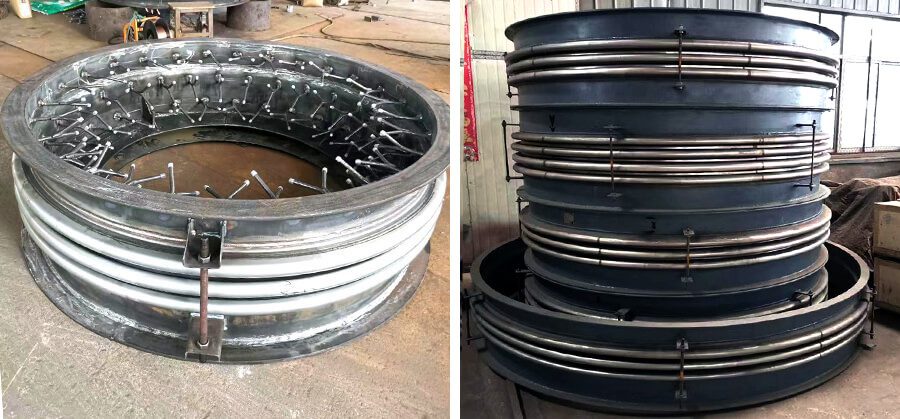In the world of construction and engineering, Деформационные швы play a critical yet often overlooked role. These specialized components are the silent guardians that allow structures—from skyscrapers and bridges to pipelines and railways—to “breathe,” flex, and endure the relentless forces of nature and human use. Failure to incorporate them properly can lead to catastrophic structural damage, costing millions in repairs and risking public safety. This comprehensive guide delves into the purpose, types, applications, and innovations of expansion joints, highlighting their indispensable role in modern infrastructure.
What is an Expansion Joint?
An деформационный шов is a purpose-built structural gap designed to accommodate movement caused by thermal expansion, seismic shifts, wind sway, vibrations, or settlement. When materials like concrete, steel, or composites are subjected to temperature fluctuations, they naturally expand (heat) or contract (cold). Without a buffer, this movement generates immense internal stresses, leading to cracks, warping, or structural failure. Expansion joints act as deliberate “movement accommodation points,” preventing damage by allowing controlled displacement while maintaining structural continuity.
The Mechanics: Why Movement Matters
Materials expand and contract according to their coefficient of thermal expansion. For example: – Concrete: Expands ~10 mm per 30 meters for a 30°C temperature change. – Сталь: Expands ~12 mm per 30 meters for the same change.
Other forces exacerbating movement include: – Seismic activity: Earthquakes cause lateral shifting. – Dynamic loads: Traffic vibrations on bridges or machinery oscillations. – Settlement: Ground shifts beneath foundations. – Hydraulic pressure: Water flow in pipelines.
Expansion joints absorb these forces through specialized materials (rubber, metal alloys, polymers) and flexible designs, ensuring structural integrity and longevity.
Types of Expansion Joints (Categorized by Application)
1. Building Expansion Joints
These isolate structural sections within buildings to prevent stress buildup. Common types include:
| Тип | Лучшее для | Основные характеристики |
|---|---|---|
| Strip Seals | Floors, walls | Flexible rubber/metal strips; watertight seal |
| Silicone Joints | Facades, curtain walls | UV-resistant; accommodates multi-axis movement |
| Compression Seals | Parking decks, stadiums | Pre-compressed foam or rubber for rebound |
| Modular Joints | Large-movement buildings (>75mm) | Multi-pronged metal rails for heavy loads |
2. Bridge Expansion Joints
Critical for bridge decks coping with traffic, wind, and thermal shifts: – Finger Plate Joints: Interlocking steel fingers for large movements (e.g., suspension bridges). – Modular Bridge Joints (MBJS): Complex systems for highway/megabridges (accommodates 300mm+ movement). – Nosing Joints: Low-cost solution for sidewalks/small bridges.
3. Pipeline/Piping Expansion Joints
Used in industrial plants, HVAC, and plumbing to manage thermal cycles and vibrations: – Metal Bellows: Stainless steel convolutions for high-pressure/temperature systems. – Rubber Joints: Flexible connectors for vibration damping (e.g., pumps). – Tied Bellows: Axial rods control movement in pressurized pipes.
4. Road/Runway Joints
Prevents concrete pavement buckling: – Doweled Joints: Steel dowels transfer vertical loads while permitting horizontal movement. – Asphalt Plug Joints: Low-noise, flexible asphalt fillers.
Design Considerations: Engineering for Movement
Designing an effective expansion joint requires analyzing: 1. Movement Capacity: Axial (compression/extension), lateral (shear), rotational, or combined. 2. Environmental Factors: Temperature range, UV exposure, chemical contact, and seismic zones. 3. Load Dynamics: Traffic volume (for bridges) or machinery vibrations (in plants). 4. Совместимость материалов: Concrete, steel, or specialized alloys must interact without galvanic corrosion. 5. Waterproofing: Critical for parking structures and bridges to prevent corrosion or leakage.
Case Study: The Millau Viaduct (France)
This record-breaking cable-stayed bridge uses multi-directional modular joints to handle 60+°C temperature swings and wind-induced oscillations. Each joint accommodates ±400mm movement to protect its 2.5km deck.

Common Failure Modes & Maintenance
Neglected expansion joints cause widespread problems: – Утечка: Compromised seals lead to water ingress, corroding steel reinforcement (concrete cancer). – Material Degradation: Rubber cracking from ozone/UV exposure or metal fatigue. – Debris Accumulation: Dirt/gravel jam joints, restricting movement. – Noise/Vibration: Worn joints create loud “clunks” on bridges or shaky pipelines.
Best Practice Maintenance:
- Inspections: Biannual checks for cracks, corrosion, or blockages.
- Уборка: Remove debris to ensure unrestricted movement.
- Seal Replacement: Preemptive swap-out of aging rubber/metal components.
- Monitoring Sensors: Strain gauges or accelerometers detect anomalies early.
Innovations & Future Trends
Technology is revolutionizing expansion joints:
- Shape Memory Alloys (SMAs): “Self-healing” metals that return to original shape after deformation.
- Smart Sensors: IoT-enabled joints transmit real-time data on movement, stress, and damage.
- Low-Carbon Materials: Recycled rubber composites and corrosion-resistant alloys extend lifespan sustainably.
- 3D Printing: Custom joint designs for complex architectural structures.
- Seismic Isolation Systems: Base-level joints decouple buildings from earthquake ground motion.
Conclusion: The Pillars of Resilient Infrastructure
Expansion joints are far from an afterthought—they are engineered solutions vital to structural resilience. From the Burj Khalifa’s 3,000+ façade joints absorbing desert heat fluctuations to the Golden Gate Bridge’s seismic-modular systems, these components ensure safety and longevity. As climate change intensifies thermal swings and urban infrastructure ages, investing in advanced, maintainable expansion joints isn’t optional—it’s foundational. Ignoring their role risks costly failures; embracing innovation promises smarter, safer cities built for the challenges ahead. For architects, engineers, and facility managers, understanding expansion joints means building not just for today, but for decades of dynamic change.

